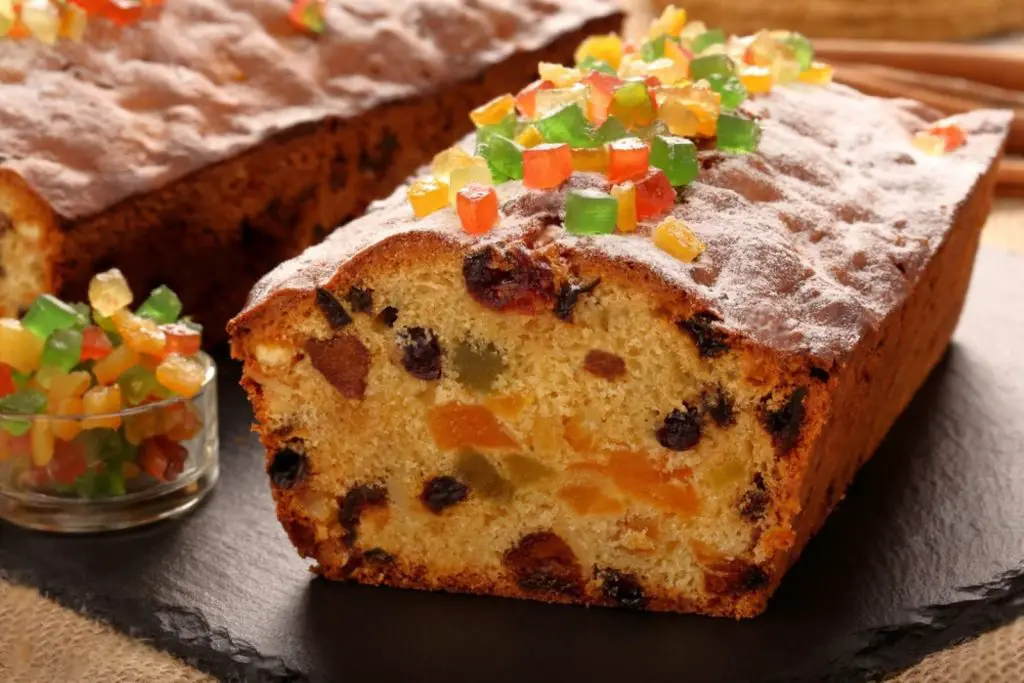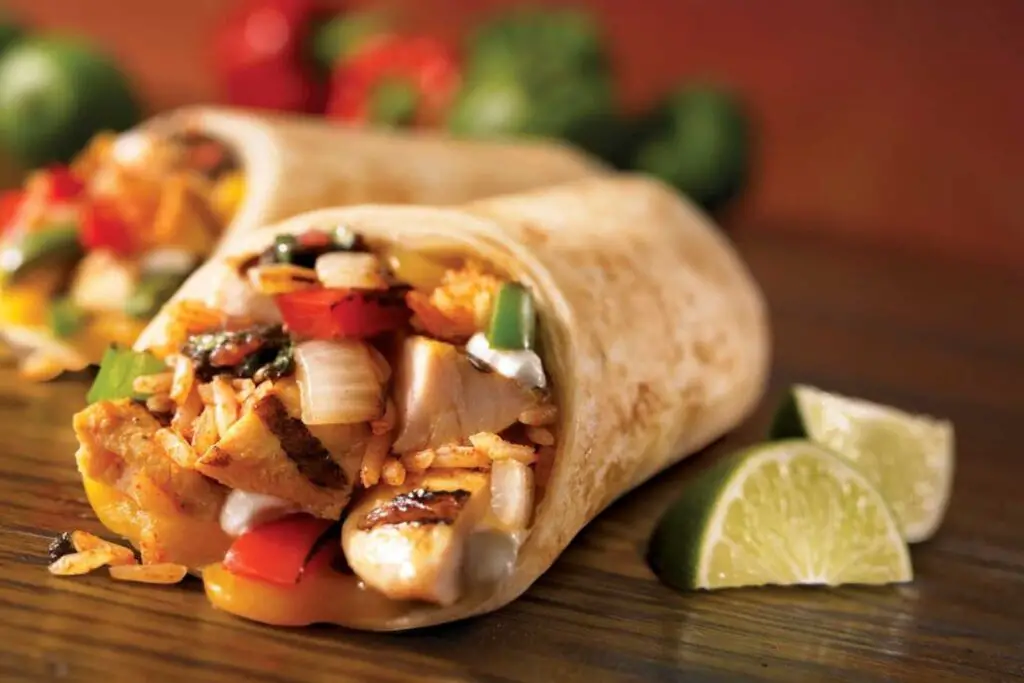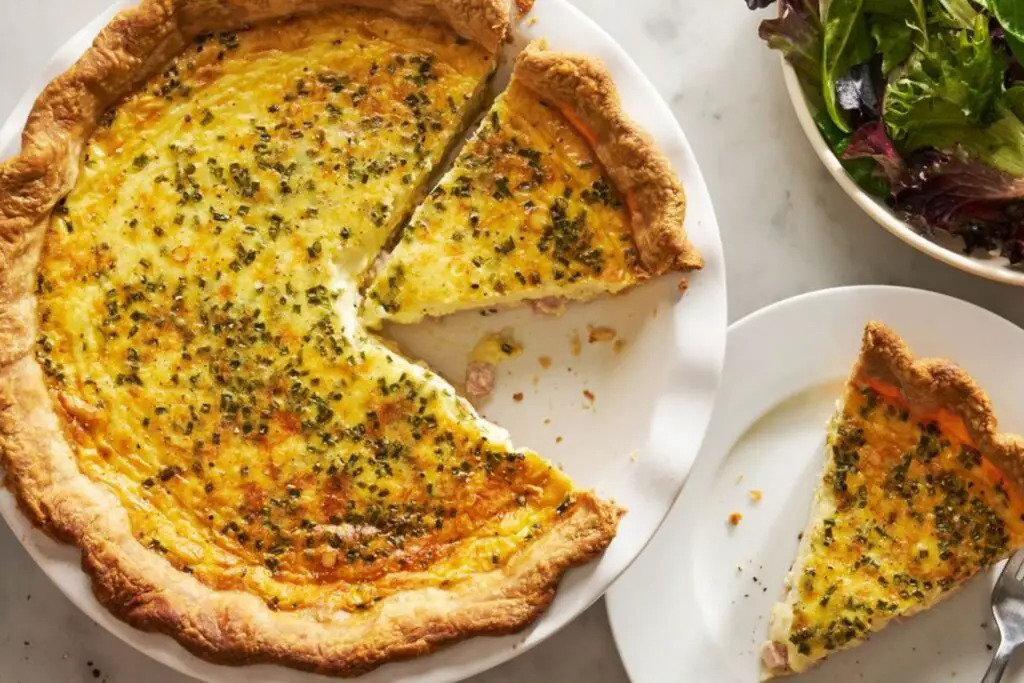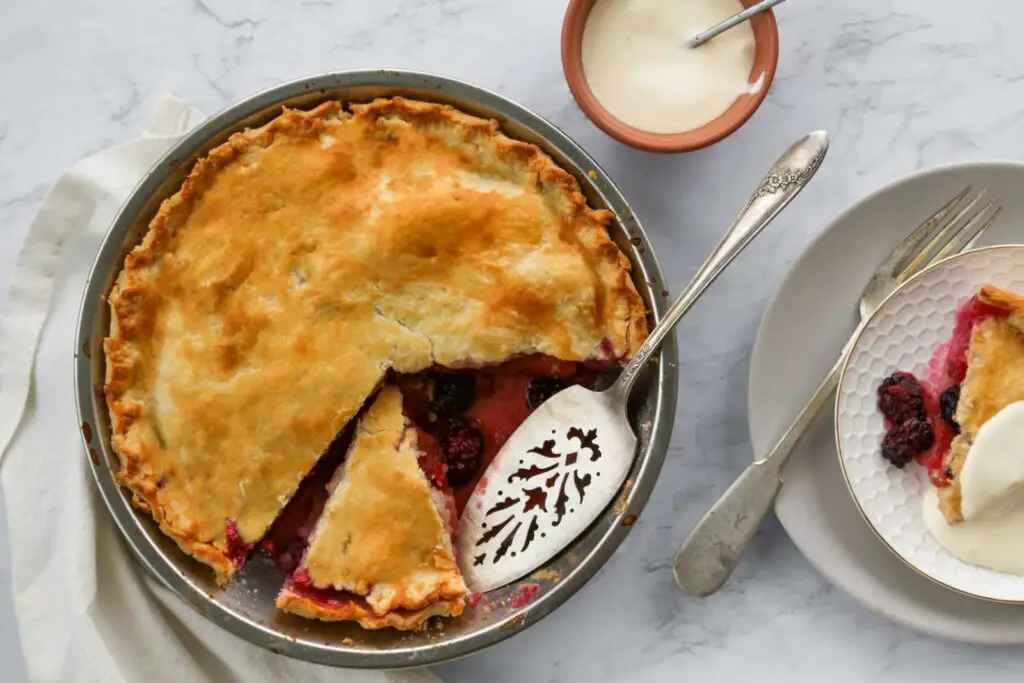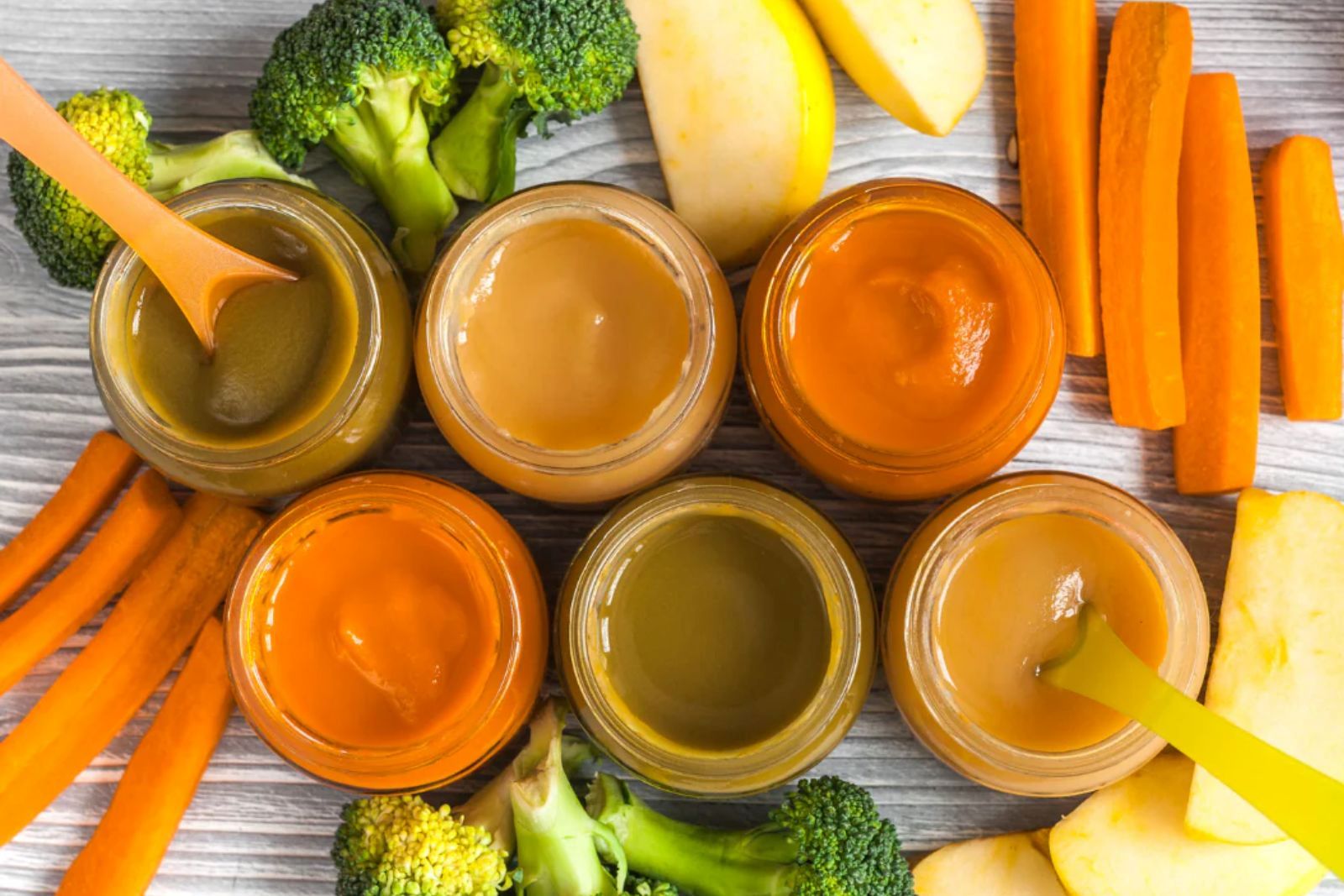
Baby food is specially prepared food for infants and young children who are transitioning to solid foods. It is typically pureed or mashed for easy consumption and digestion. Commercial baby food is available in jars, pouches, or containers and contains a variety of fruits, vegetables, grains, and sometimes meat or fish. Homemade baby food can also be prepared using fresh ingredients. Baby food is categorized into stages based on the baby’s age and developmental readiness. Freezing baby food is a convenient and practical way to ensure you always have nutritious meals prepared for your little one. Whether you’ve made a large batch of baby food or want to store leftovers, freezing it properly will help maintain its quality and freshness.
Here is a step-by-step guide on how to freeze baby food:
Step 1: Prepare the baby food
Before freezing baby food, it’s important to start with freshly prepared food that meets your baby’s nutritional needs. When preparing baby food, consider the following steps:
- Choose fresh ingredients: Select high-quality fruits, vegetables, meats, or grains for your baby’s meals. Opt for organic options if possible and ensure that they are ripe and free from any signs of spoilage.
- Wash and peel: Thoroughly wash fruits and vegetables under running water to remove any dirt or impurities. Peel them as needed, especially if the skins are tough or not suitable for your baby’s age.
- Cook ingredients thoroughly: Cooking helps soften and make the food easier to puree. Depending on the ingredient, you can steam, bake, boil, or microwave them until they are fully cooked. This step also helps eliminate any harmful bacteria that might be present.
- Blend or puree: Once the ingredients are cooked, let them cool down before blending or pureeing them. Use a food processor, blender, or immersion blender to achieve a smooth and consistent texture. For added moisture, you can use breast milk, formula, or water while blending.
- Adjust consistency: Consider your baby’s age and stage of development when determining the desired consistency of the baby food. For younger babies, a smoother, runnier texture is recommended, while older babies can handle slightly thicker textures with small soft chunks.
- Avoid seasoning and additives: At this stage, it’s best to avoid adding salt, sugar, or spices to the baby food. Babies’ taste buds are still developing, and they don’t need these additional flavors. Keep the baby food as natural and simple as possible.
Step 2: Allow the baby food to cool down
After preparing the baby food, it’s crucial to allow it to cool down to room temperature before proceeding with the freezing process. Here’s why it’s important:
- Prevents condensation: When hot or warm food is placed directly into containers for freezing, it can create condensation inside the containers. This moisture can lead to freezer burn, which affects the quality and taste of the food. Allowing the baby food to cool down helps minimize condensation, preserving its texture and flavor.
- Maintains food safety: Cooling the baby food properly helps prevent the growth of harmful bacteria. Rapid cooling can halt bacterial growth and minimize the risk of foodborne illnesses. By allowing the food to cool at room temperature, you ensure that it reaches a safe temperature before freezing.
- Protects container integrity: Placing hot or warm baby food into containers can potentially cause damage. Extreme temperature changes may cause containers to warp or break, risking contamination of the food. Allowing the food to cool down before freezing helps protect the integrity of the containers and ensures food safety.
To cool the baby food effectively, follow these guidelines:
- Transfer the baby food to shallow containers: Spreading the baby food in shallow containers promotes faster cooling. Avoid using deep containers or stacking them closely together, as it can trap heat and prolong the cooling process.
- Cover the containers: While cooling, cover the containers with lids or a layer of plastic wrap to prevent any contaminants from entering the food.
- Place the containers in a cool area: Find a cool and well-ventilated spot in your kitchen or place the containers on a cooling rack. Avoid placing them directly in the refrigerator, as it may affect the temperature of other perishable items.
Step 3: Portion the baby food
After the baby food has cooled down, the next step is to portion it into individual serving sizes. Portioning baby food offers several benefits:
- Convenient serving sizes: Dividing the baby food into individual portions makes it easier to thaw and serve only what your baby needs for each meal. This way, you can avoid wastage and ensure that the remaining food remains fresh and uncontaminated.
- Easy thawing: Portioning the baby food into smaller servings allows for quicker and more even thawing. It enables you to thaw just the right amount needed for a single feeding without having to defrost the entire batch.
- Versatile options: By using small containers, ice cube trays, or silicone baby food trays with individual compartments, you have the flexibility to freeze the baby food in different portion sizes. This is particularly useful as your baby’s appetite and dietary needs may change over time.
- Reduced exposure to air and contaminants: Dividing the baby food into portions and using appropriately sized containers helps minimize the exposure of the unused portion to air and potential contaminants during the thawing and feeding process. This helps maintain the quality and safety of the remaining baby food.
What is the recommended portion size for freezing baby food?
The recommended portion size for freezing baby food depends on your baby’s age and appetite. Generally, it is advisable to freeze baby food in small portions, such as one to two ounces, for infants just starting on solids. As your baby grows, you can increase the portion size accordingly. This allows for easy thawing and reduces waste, enabling you to defrost only what your baby will consume in one serving.
Step 4: Pack and seal the containers
After portioning the baby food, it’s crucial to pack and seal the containers correctly to preserve the quality, taste, and safety of the frozen food. Here are a few tips for packing and sealing the containers:
- Choose freezer-safe containers: Select containers specifically designed for freezing, such as BPA-free plastic containers, glass jars, or silicone baby food storage containers. These materials are durable, and freezer-safe, and help maintain the quality of the food.
- Leave space for expansion: When filling the containers, leave some space at the top to allow for expansion during freezing. Liquids, in particular, tend to expand when frozen. Leaving enough headspace prevents the containers from cracking or bursting.
- Use airtight seals: Ensure that the containers have airtight lids or closures to prevent air from entering and moisture from escaping. This helps preserve the texture, taste, and nutrients of the baby food.
- Alternatively, use freezer bags: If you prefer to use freezer bags, choose high-quality, thick bags designed for freezing. Portion the baby food into the bags, squeeze out excess air, and seal them tightly. Double-bagging can provide an additional layer of protection against freezer burn.
Can I freeze baby food in breast milk storage bags?
While breast milk storage bags are designed for storing breast milk, they can also be used to freeze baby food. Ensure that the bags are specifically labeled as freezer-safe and have a reliable seal to prevent leakage. It’s important to portion the baby food appropriately and lay the bags flat in the freezer to optimize space utilization. Always follow proper storage guidelines and consult with a healthcare professional for specific recommendations on freezing baby food in breast milk storage bags.
Step 5: Label and date the packages
Properly labeling and dating the packages of frozen baby food is essential for maintaining organization, tracking the contents, and ensuring that the oldest meals are used first. Here’s why it’s important:
- Easy identification: Labeling each container or freezer bag with the type of baby food makes it easy to identify the contents at a glance. This is especially helpful if you have prepared different flavors or combinations of baby food.
- Tracking freshness: By including the date of freezing on the labels, you can keep track of how long each portion of baby food has been stored in the freezer. This ensures that you use the oldest meals first, promoting a first-in, first-out system and minimizing the risk of food spoilage.
- Rotation system: Labeling and dating the packages enable you to establish a rotation system, ensuring that the frozen baby food is used within a reasonable timeframe. This practice helps maintain the quality and nutritional value of the food.
Here are some tips for labeling and dating the packages:
- Use waterproof labels: Ensure that the labels you use are waterproof or resistant to moisture. This prevents the labels from smudging or becoming unreadable when exposed to condensation or moisture during thawing.
- Clear and legible writing: Write the labels clearly and legibly using a permanent marker or adhesive labels. Make sure the writing is visible and easy to read, even when the packages are stacked in the freezer.
- Include essential information: Include the type of baby food, such as the ingredients or flavor, on the label. Additionally, write down the date of freezing so that you can easily determine the age of each portion.
- Place labels in a visible location: Stick the labels on the front or top of the containers or freezer bags where they can be easily seen. This makes it convenient to identify and select the desired baby food without having to search through multiple packages.
Step 6: Freeze the baby food
Once you have properly packed and sealed the containers or freezer bags of baby food, it’s time to freeze them. Freezing the baby food correctly is crucial for maintaining its quality, flavor, and nutritional value. Here’s what you need to know:
- Arrange in a flat position: Place the sealed containers or freezer bags in the freezer, ensuring they are arranged in a flat position. This allows for even freezing and helps maximize the use of freezer space. Avoid tilting or stacking the containers until they are frozen solid.
- Prevent deformation: It’s important to avoid stacking or placing heavy items on top of the containers or freezer bags until they are completely frozen. Freezing baby food in a flat position prevents deformation of the containers and helps preserve the integrity of the food inside.
- Quick freezing: To maintain the quality of the baby food, it’s ideal to freeze it as quickly as possible. Set your freezer to its coldest setting or use the “fast freeze” option if available. This helps minimize the formation of large ice crystals, which can affect the texture and taste of the food.
- Ideal freezing temperature: The ideal temperature for freezing baby food is 0°F (-18°C) or below. Ensure that your freezer is set to this temperature or lower to ensure optimal freezing and storage conditions.
- Freezing time: The freezing time can vary depending on the quantity and thickness of the baby food. Generally, baby food freezes within a few hours, but it’s recommended to leave it undisturbed in the freezer for at least 4-6 hours or until it is completely frozen solid.
By following these guidelines, you can ensure that the baby food freezes properly, maintaining its quality and nutritional value. Once the baby food is frozen solid, you can stack the containers or freezer bags more efficiently to save space in the freezer. Remember to handle the frozen baby food with care to avoid any accidental thawing or temperature fluctuations.
Step 7: Thaw and use frozen baby food
When you’re ready to use frozen baby food, it’s important to thaw it safely to ensure the quality and safety of the food. Here’s how to thaw frozen baby food:
- Refrigerator thawing: The recommended method for thawing baby food is to transfer the desired portion from the freezer to the refrigerator. Place the sealed container or freezer bag in the refrigerator overnight or for a few hours until it is completely thawed. This slow and gentle thawing method helps maintain the texture, flavor, and nutritional value of the food.
- Warm water bath: If you need to thaw the baby food more quickly, you can use a warm water bath. Fill a bowl or sink with warm water (not hot) and submerge the sealed container or freezer bag in the water. Make sure the packaging is waterproof to prevent water from seeping in and compromising the quality of the food. Stir or gently agitate the water periodically to promote even thawing. Once the baby food is thawed, use it immediately.
It’s important to note the following:
- Never refreeze thawed baby food: Once the frozen baby food has been thawed, it should not be refrozen. This is because freezing and thawing can affect the quality, texture, and safety of the food. It is recommended to thaw only the amount needed for a single feeding to minimize waste.
- Check the temperature: Before serving the thawed baby food, make sure to check its temperature. It should be lukewarm or at room temperature. Avoid serving it too hot to prevent the risk of burning your baby’s mouth. Always test the temperature by stirring the food and testing it on your wrist or the inside of your lip.
- Use thawed baby food within 24-48 hours: Once the baby food is thawed, it is best to use it within 24-48 hours. This helps maintain its freshness and reduces the risk of bacterial growth.
How do you reheat baby food after thawing?
After thawing frozen baby food, it’s important to reheat it safely before serving. The recommended method is to transfer the thawed food to a microwave-safe dish and heat it in short intervals, stirring well to ensure even warming. Alternatively, you can heat the thawed baby food on the stovetop by gently simmering it while stirring regularly. Always test the temperature of the reheated food to ensure it is lukewarm before feeding it to your baby.
Other related questions
How long can baby food last in the freezer?
Baby food can last in the freezer for up to 3 months without compromising its quality. Properly sealed and stored baby food maintains its taste, texture, and nutritional value during this time. Labeling and dating the packages is important to ensure the oldest portions are used first, and to follow safe thawing practices before feeding the baby.
How do I know if the baby food has gone bad after being frozen?
After being frozen, it is important to check for signs of spoilage to determine if baby food has gone bad. Look for any unusual odor, discoloration, or texture changes, such as excessive water separation or freezer burn. If the baby food shows any of these signs or if you have any doubts about its safety, it is best to discard it to ensure the well-being of your baby.
What types of baby food can be frozen?
Various types of baby food can be safely frozen for later use. This includes pureed fruits like bananas, apples, and berries, as well as vegetables such as sweet potatoes, peas, and carrots. Meats like chicken, beef, and fish can also be pureed and frozen, along with grains like rice, quinoa, and oats. It’s important to ensure that the ingredients are fresh, cooked thoroughly, and pureed to an appropriate consistency before freezing.
Can I freeze store-bought baby food?
Yes, store-bought baby food can typically be frozen for later use. Many store-bought baby food brands offer freezer-friendly packaging that allows for safe storage in the freezer. It is important to check the packaging labels for specific freezing instructions and guidelines provided by the manufacturer to ensure optimal quality and safety.
Are there any types of baby food that should not be frozen?
While many types of baby food can be safely frozen, there are a few exceptions to keep in mind. It is not recommended to freeze baby food that contains high water content vegetables like lettuce, cucumber, or watermelon, as they may become mushy and lose their texture upon thawing. Additionally, dairy-based products such as yogurt or milk-based baby foods may experience changes in texture and consistency when frozen and thawed, so it is best to prepare these fresh when needed. Always consult packaging labels or consult with a healthcare professional for specific recommendations on freezing different types of baby food.
Can I freeze baby food with added spices or seasonings?
Yes, you can freeze baby food with added spices or seasonings. However, it is important to introduce spices and seasonings gradually and in moderation to ensure your baby’s tolerance and preferences. Avoid using excessive amounts of spices or strong seasonings that may overwhelm your baby’s palate. It is recommended to start with mild spices like cinnamon, ginger, or a small amount of herbs and gradually increase the variety and intensity of flavors as your baby progresses with their solid food journey. Always consult with your pediatrician or a healthcare professional for specific guidance on introducing spices and seasonings to your baby’s diet.
Can I freeze baby food that contains added meat or protein?
Yes, you can freeze baby food that contains added meat or protein. Cooking and pureeing meat or protein-rich foods like chicken, beef, fish, or legumes before freezing ensures their safety and palatability. It’s important to follow proper cooking techniques to ensure the meat is fully cooked and puree it to an appropriate consistency. Portion the meat-based baby food, pack it in suitable freezer containers and freeze it promptly to preserve its quality and nutritional value.
Notes:
These FAQs address common concerns about freezing baby food. It’s important to consult with your pediatrician or a qualified healthcare professional for specific recommendations regarding your baby’s individual needs and dietary requirements.

